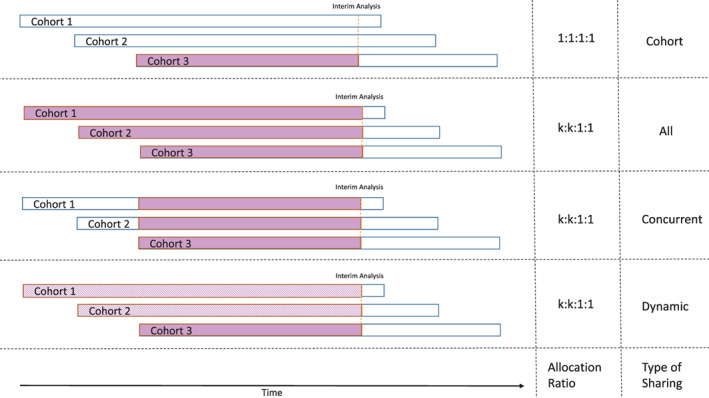FIGURE 2.

Schematic overview of the different levels of sharing. No sharing happens if only “cohort” data are used. If sharing “all” data, whenever in any cohort an interim or final analysis is performed, all SoC and backbone monotherapy data available from all cohorts are used. If sharing only “concurrent” data, whenever in any cohort an interim or final analysis is performed, all SoC and backbone monotherapy data that was collected during the active enrollment time of the cohort under investigation are used. If sharing “dynamically,” whenever in any cohort an interim or final analysis is performed, the degree of data sharing of SoC and backbone monotherapy data from other cohorts increases with the homogeneity of the observed response rate of the respective arms. A solid fill represents using data 1‐to‐1, while a dashed fill represents using discounted data (for more information see Appendix A.1). If at any given time there are k active cohorts, the allocation ratio is 1:1:1:1 in case of no data sharing and k:k: 1:1 otherwise (combination: add‐on monotherapy: backbone monotherapy: SoC). This allocation ratio is updated for all active cohorts every time the number of active cohorts k changes due to dropping or adding a new cohort
